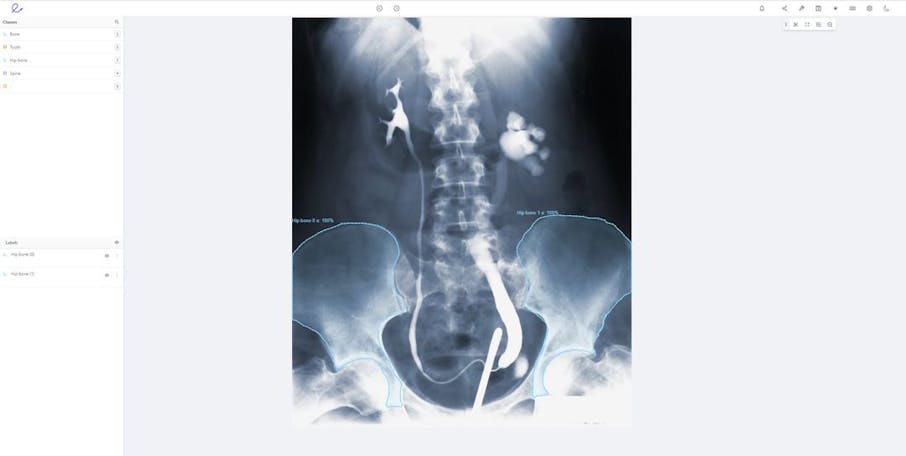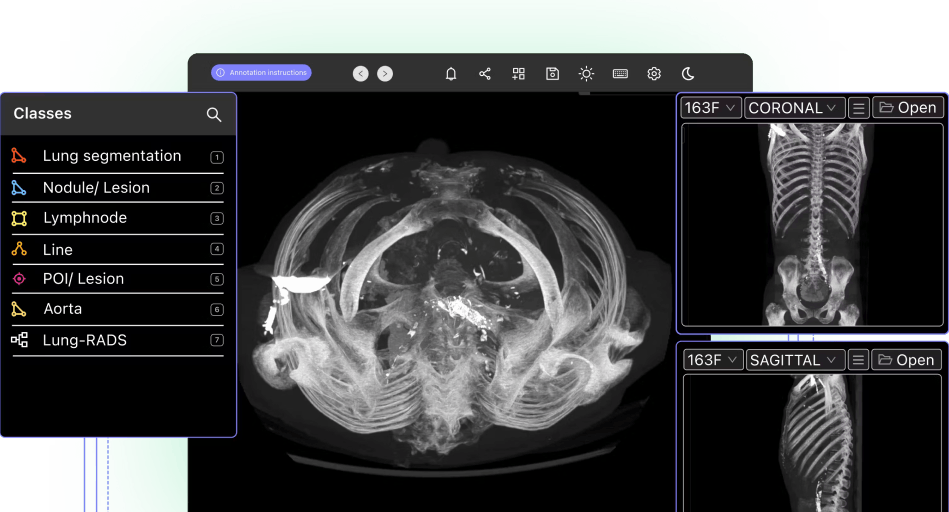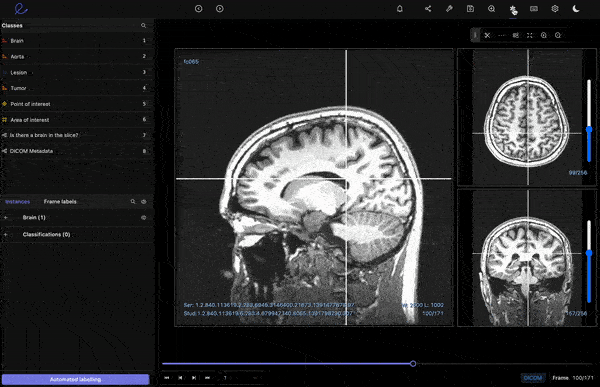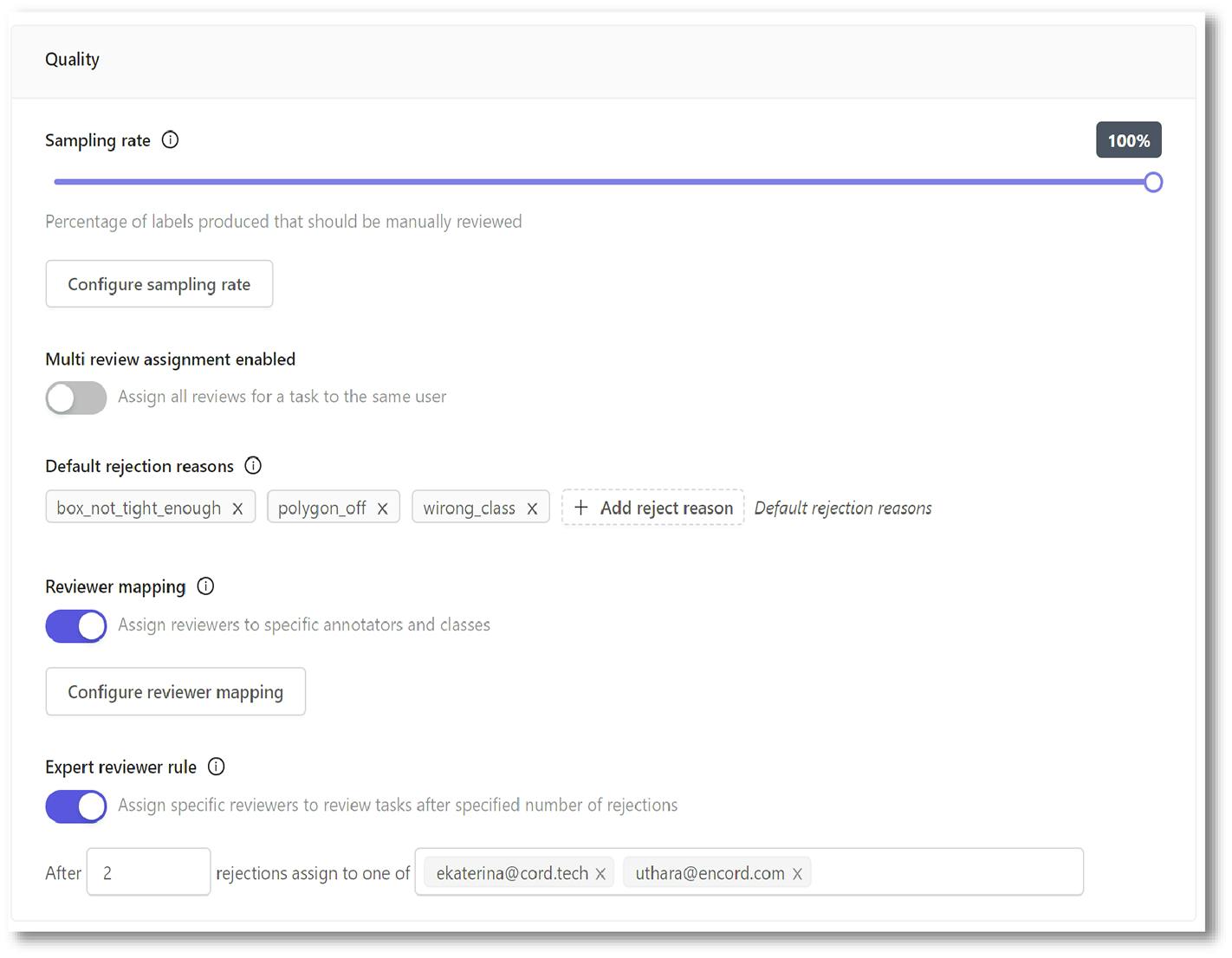Contents
Native DICOM support
Native 3D annotation
Easy to use interface
Automated annotation of DICOM images
Quality control features
Audit Trails
SOC2 and HIPAA compliance
Encord Blog
7 Features to Look for in a DICOM Annotation Tool

If you’re trying to create training data for a medical AI model, you might have used free and open-source tools like ITK SNAP to label medical images. And they’re great as a starting point but do lack a number of features for annotating efficiently and effectively.
So if you’ve come to the conclusion that you need a better solution for labeling medical images (especially in DICOM or NIfTI formats), you’ll be looking around at image labeling tools. But even when looking at paid for tools, there is an element of risk. Not all image annotation tools are created equal, especially when it comes to the specific needs of the computer vision and healthcare space.
So to help you find the right platform, we’ve created a guide to the seven features you need to look for when choosing tools for annotating and labeling DICOM images.

Native DICOM support
It might seem obvious, but a fundamental consideration is whether the annotation tool you’re looking at can support DICOM files natively (it also helps if it can natively support other file formats, like NIfTI). What that means is whether the tool can open and view DICOM files without having to convert them to some other format (such as a video file).
When a file is converted from DICOM to something else, it increases the chances of data being lost (such as DICOM metadata) or the converted file is corrupted in some way. Converted files are also not displayed using Hounsfield units, because they have to be shifted to a grayscale range that is compatible with the file format they've been converted to. Ultimately this results in lower-quality annotations as your annotators are losing vital data from the images they’re looking at. And given the importance of having high-quality training data for medical AI models, it makes sense to ensure you’re not losing anything when you add your image files to your data labeling tool.

DICOM support in Encord
Native 3D annotation
Another key feature is the ability to view and annotate images in 3D, natively within the annotation platform. This makes it easier to identify objects within the scans (such as cancerous tumors) and also allows for volumetric annotations, where you’re labeling something in three dimensions. Having the ability to annotate radiology images in 3D means you can create better annotations and ultimately create better data to train your model on
Easy to use interface
While this might seem like a basic point, it is something that needs a lot of consideration. There are many labeling tools out there that can be used to annotate medical images, but they won’t have been designed with this specific task in mind. Annotating a chest X-Ray or brain MRI is a very different task from labeling road signs or fruit, and the tool you use has to reflect that.
Some key usability features you need to look for when choosing a DICOM annotation tool include:
- The ability to render images in the full range of the Hounsfield scale
- Multiplanar reconstruction showing images in 2D orthogonal planes (coronal, sagittal, axial) so you can better visualize, analyze, and annotate the images
- Window width (WW) and window level (WL) adjustments with the option to save custom preset, which can save your annotators time
- A distance measurement tool for measuring the accurate, real-world distance between any two points in an image
- View metadata as an overlay so your annotators can easily see the metadata when they need it.

Window width and window level adjustment in Encord
Automated annotation of DICOM images
Given the expense of using highly skilled medical annotators, any feature that can make them more efficient is vital. This is why your DICOM annotation tool needs to have annotation automation functionality. There are a number of ways automation can be achieved, but one of the most powerful is interpolation. But not all interpolation features are the same. You’ll want one that:
- Doesn’t need matching pixel information in neighboring frames in order to function
- Doesn’t require a matching number of vertices between objects in set keyframes
- Allows you to draw object vertices in arbitrary directions, and not have to follow a predefined direction
Quality control features
Maintaining the quality of your labeled data is vital for ensuring your models have the best ground truth to learn from. And being able to put rigorous quality control measures in place can make this much easier and more efficient. What you need to be looking for in your DICOM annotation platform is two things. The first is the ability to set granular parameters for your quality control workflows. This should include the following:
- The percentage of labels that are to be manually reviewed
- Rules for distribution of review tasks
- Common rejection reasons that can be used to identify and systematize errors in your labels
- Reviewer to class and annotator mapping (e.g. label X with class Y should always be reviewed by reviewer Z)
- Assign tasks that are rejected after a specific number of review cycles for expert reviews.
Then the second quality control feature to look for is being able to dynamically change the sampling rate applied to submitted annotation tasks. This means the project administrator can set a higher proportion of submitted labels the reviewer should look at, increasing the overall quality of the labeled data. It also helps if this can be tweaked further to set sampling rates by annotator and annotation type so that more complex images get a more thorough review.

Data labeling quality control panel in Encord
Audit Trails
The penultimate feature you need to consider for your DICOM annotation tool is around creating an audit trail. To get FDA or CE approval, one of the requirements is to be able to provide a full audit trail of the data that your medical diagnostic model is trained on. With this in mind, your labeling tool needs to have the ability to show a full audit trail for every label produced and the review process behind that label.
SOC2 and HIPAA compliance
And finally, whatever medical image labeling tool you end up using, if you’re going to be using it to handle sensitive patient data, it needs to comply with a couple of critical frameworks.
The first of these is SOC 2 (Systems and Organizational Control 2), which demonstrates that an organization’s business process, information technology, and risk management controls are properly designed. The second of these is compliance with HIPAA (Health Insurance Portability and Accountability Act), showing that the data labeling platform looks after patient data in accordance with the rules of HIPAA.
So there you have it - seven features that you should be looking at when choosing your DICOM annotation platform. Taken together, these features can make your medical image labeling much more efficient while also resulting in better labeled data and reduced risk.
AI-assisted labeling, model training & diagnostics, find & fix dataset errors and biases, all in one collaborative active learning platform, to get to production AI faster. Try Encord for Free Today.
Want to stay updated?
Follow us on Twitter and LinkedIn for more content on computer vision, training data, and active learning.
Explore the platform
Data infrastructure for multimodal AI
Explore product
Explore our products


